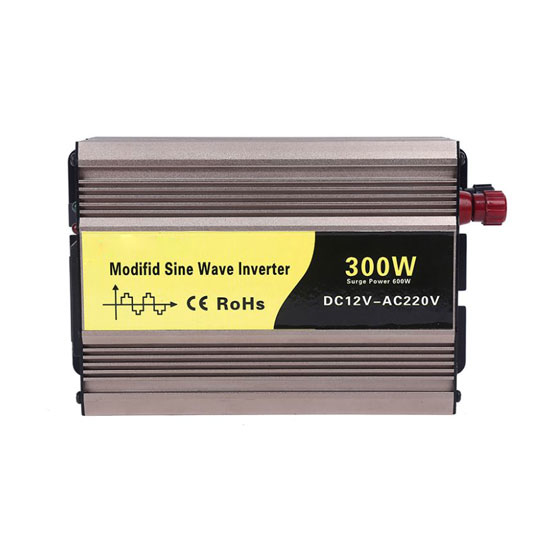Modified sine wave inverters are a cost-effective choice to run appliances and equipment that is less sensitive to power fluctuations, such as lights and some tools. Modified sine wave inverters simulate AC power inverted from DC batteries. Next, we will talk about the precautions of a modified sine wave power inverter.

Precaution tips for modified sine wave power inverter
- Avoid inductive loads: Although modified sine wave inverters can handle most household appliances, sine wave inverters are usually more suitable for some inductive loads (such as motors, compressors, etc.). Because inductive loads require a large starting current at startup and have high requirements for waveforms. Using a modified sine wave inverter to drive an inductive load may cause equipment performance degradation or damage. Therefore, when selecting an inverter, you should understand the characteristics of the load and avoid using a modified sine wave inverter to drive high-demand inductive loads.
- Starting current problem: Many devices will generate a large current when starting, which may cause a transient overload on the inverter. To ensure the stable operation of the inverter, it is necessary to ensure that the rated power of the selected sine wave inverter can meet the current demand of the device when it starts. At the same time, it is recommended to start the equipment in batches to avoid starting multiple high-power devices. To reduce the burden on the inverter.
- Back EMF voltage: When the inductive load is suddenly powered off, a "back EMF voltage" may be generated, which may damage the inverter. To avoid this, it is recommended to turn off the inverter before disconnecting the inductive load or take appropriate protective measures, such as installing a delay relay.
- Output voltage measurement: The output voltage of the modified sine wave inverter should be a stable 220V (or 110V, depending on the specific situation). During use, a voltmeter should be used to check whether the output voltage is normal. If the output voltage is found to be unstable or out of the normal range, the machine should be stopped immediately to check the cause and handle it.
- Impact on equipment: Although the modified sine wave inverter can meet the use needs of most household appliances, some precision equipment or high-end electronic equipment may have higher requirements for waveforms. The use of modified sine wave inverters may have a certain impact on the performance of these devices. Therefore, the specific requirements of the equipment should be understood before use, and the appropriate inverter type should be selected according to the needs.
- Certain rechargers for small nickel-cadmium batteries can be damaged if plugged into a solar inverter. In particular, two types of appliances are susceptible to damage: Small, battery-operated appliances such as flashlights, cordless razors, and toothbrushes that can be plugged directly into an AC receptacle to recharge. Certain battery chargers for battery packs are used in some cordless hand tools. Chargers for these tools have a warning label stating that dangerous voltages are present at the battery terminals.
- DO NOT use a modified sine wave inverter with the above two types of equipment.
- The majority of portable appliances do not have this problem. Most portable appliances use separate transformers or chargers that plug into AC receptacles to supply a low-voltage DC or AC output to the appliance. If the appliance label states that the charger or adapter produces a low-voltage DC or AC output (30 volts or less), there should be no problem powering that charger or adapter.
- DO NOT plug small appliances into the inverter AC receptacles to directly recharge their nickel-cadmium batteries. Always use the recharger provided with that appliance.
- DO NOT plug in battery chargers for cordless power tools if the charger carries a warning that dangerous voltages are present at the battery terminals.
- Not all fluorescent lamps operate properly with a modified sine wave inverter. If the bulb appears to be too bright or fails to light, do not use the lamp with the inverter.
- Some fans with synchronous motors may slightly increase in speed (RPM) when powered by a modified sine wave inverter. This is not harmful to the fan or the inverter.
Safety Warning: 110 Volts of current can be lethal. Improper use of a power inverter will result in property damage, personal injury, or loss of life. Please read and follow carefully the instructions in the Owner's Manual provided with every inverter for important safety considerations and precautions.
